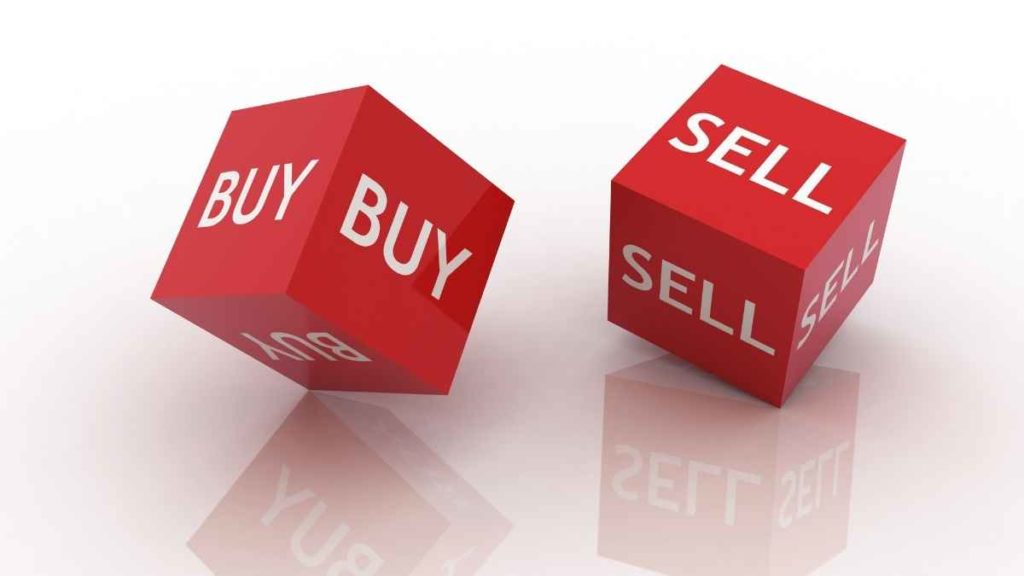Cryptocurrency Trading for Beginners
For many, cryptocurrencies remain an elusive concept, with news stories that highlight their massive rise and the intense crashes it receives. Yet, for hundreds of thousands of people around the world crypto trading is a way of life and a means of generating additional income. In little over 12 years, the market has swelled to more than $1.88 trillion with tens of thousands of the digital tokens being traded.
Cryptocurrency Trading for Beginners 2022
Naturally, the heavy volatility of cryptos can be a major cause of concern for people who have not dabbled in it, but what if you could use the same fluctuating prices to your advantage? Trading is easy, with buying a crypto when the value is low and selling it when it gains value. Cryptocurrency trading for beginners.
That of course is oversimplification. However, this guide will help you grasp the basic concepts of cryptocurrencies and how to trade these so you can too.
Value of Cryptos
Before we jump down the rabbit hole, we must understand that how cryptocurrencies have managed to be of value in the first place. A purely digital entity that has no connection to fiat (traditional currency), Bitcoin remained only as a theoretical application with no real life value.
The first instance of Bitcoin being bought or sold for money happened in February, 2010. dwdollar, a user of the Bitcoin discussion forum Bitcointalk posted a message where he intended to establish an online exchange where people could buy and sell Bitcoin for USD using PayPal as a payment processor. This move, though only lasting a short time, set in motion the connection between Bitcoin and US Dollar and finally, the cryptocurrency had real life value.
When talking about the real life usability of Bitcoin and other cryptocurrencies, we cannot forgo the most famous purchase ever made using the digital coins. Laszlo Hanyecz, a Bitcoin coder and miner decided to see if he could use his collected Bitcoins to directly purchase a Pizza. He successfully did so in May 2010, using 10,000 BTC to buy two Papa Johns’ pizza pies.
Today, Bitcoin and the plethora of other cryptocurrencies have established their values against different fiat and are tradable on different crypto exchanges worldwide.

Invest or Trade?
If you are new to cryptocurrency (or any financial trading for that matter), first you need to differentiate between the oft confused investing and trading. While both investing and trading have the same goal of generating profits and wealth, they are slightly different in how the profits are achieved.
Investing is a long term strategy, usually spanning years. A crypto investor will buy the assets and set them aside, waiting for the time when the cryptos are bound to give them maximum value against the initial buying price. Investors will ignore localized market fluctuations, both rise and fall as on the larger scale of things, they set their eyes on a much higher price.
Crypto trading on the other hand is a relatively short term buying of the tokens, with attempts to capture the market volatility to make profits. As our guide is about trading, we will concentrate on that.
Trading Styles
Compared to investing, where a person makes money by a single purchase and a sale that can be year’s apart, traders will establish much more frequent trading actions, buying and selling at each opportunity they see is worth it. The frequencies of trades define the trading style:
- Scalp Trading: The most fast paced of all strategies, scalping sees a trader place several orders at a time, with each one lasting from a few seconds to a couple of minutes at the most. The profits generated per trade a very minute, with you scalping the slight price differences (hence the name). But with several hundred trades that you can accomplish over a period of a day’s activity, the small profits can accumulate to be significant.
- Day Trading: With typical trades lasting a few hours at maximum, Day Trading is a much lighter form of scalping, but with the mission to liquidate all assets at the end of the day and start afresh the next. Small price movements that can be scalped are ignored, with Day Traders not even bothering to look at it.
- Swing Trading: Your typical trades are held from a few days to a couple of weeks. The aim is to capture large movements that can occur between longer time frames. Buying and selling is only made when large price “swings” occur.
- Position Trading: Position trading is all about going the long haul. Ups and downs of crypto prices are usually ignored, with the trader focusing on more than usual price movements that can occur over extended periods of time, sometimes taking months – even years.
Pro Tip: take your time to decide the type of strategy you want to adopt for your crypto trading. Once that’s done, stick to it. Strategy hopping isn’t advised as you will not be able to develop a pace for it. While you may eventually may need to switch over to another trading strategy as you might find that your current selection is not suitable for you, give the current one a bit of time to understand it and (most importantly) develop a patience as not all of your trades will be profitable. Losses are a part of life. Learn to accept this in your crypto trading.

Reading the Indicators
Like any market, crypto trading can be beneficial if a trader is able to understand the market itself and the direction it is going to take. While a single indication can be significant enough to move the price in your favor, it is better to have a holistic view of the market. Indicators are largely distributed in two categories:
Technical Indicators
Technical indicators are all about mathematical and statistical breakdown of the price movements and making calculated predictions. If you have ever looked at a trading chart or interface, you will always see a graph being presented. The graph displays current and price history of your asset and many exchanges even let you overlay different indicators for you to understand and make an informed decision.
The most commonly used indicators include:
- Candle Sticks: Made famous by Japanese rice traders, each “stick” in the graph represents a time period (which you can adjust as per your trading strategy). A green candle means that the opening and closing difference are in the positive, while a red means a lower closing. Candle wicks (also known as heads and tails) show the maximum and the minimum value achieved by the candle.
- Moving Averages: Moving averages take into account the past trend of the asset value and mathematically show what the price should be and what it can be in the future. While MAs are mostly used in conjunction with Candle Sticks, other variations such as EMA are also employed.
- RSI: Relative Strength Indicator shows you whether an asset is overbought or oversold. An overbought asset will have a tendency to retract while an oversold can indicate that the future price will bounce back.
There are other complex technical indicators too that you can use, such as MACD, Bollinger, OBV etc.
Fundamental Indicators
While mathematical prediction is one thing, calculations can never account for the sentiments of the market and fundamental indicators are also an important part of understanding what traders are expecting emotionally.
While there is no hard and fast method of using a fundamental indicator, things like the market sentiment, regulatory actions, launches, endorsements and even non crypto related news like global markets and conflicts can have a role in crypto price movements.
While keeping an eye out for fundamental indicators can be tiring, especially when there are several sources of news that you need to keep yourself abreast with, services like Algory can help you keep up with the data. You can even download a mobile version to have instant updated market information right in your palm.
Trading your Favorite Cryptocurrencies
Now that you have a basic understanding of what trading is and what you have to look for in order to make a good trade, the next step is getting on a crypto exchange and do actual trading. There are several reliable crypto exchanges available today, such as Binance, OKX, Coinbase Pro and others that you can use.
Before starting, we do advise you to consult with a legal expert to see which exchange is supported in your jurisdiction and what kind of legal protection do you have. At the same time, familiarize yourself with the different charges and fees that the exchange will have, such as trading fee, deposit/withdrawal fees and limits etc. If you are going to use fiat to fund and withdraw from your account, it would be wise to check up on banking support too.
Register on an Exchange
After you have decided on which exchange you want to start your trading, you can simply register. Most platforms are free to register and can be done with either using your email address or a mobile phone number.
Pass the KYC and AML Checks
While a basic trading account may not require you to submit any documentation, Know Your Customer (KYC) and Anti Money Laundering (AML) regulations may require you to furnish documents such as proof of residence, address and funding methods. These are especially required if you want to have your trading and/or withdrawal limits enhanced.
Fund your Trading Account
If you already have access to cryptos, you can simply transfer over to your exchange account by going to your exchange and finding the relevant crypto address. Then you can use your private wallet to send over to the platform. If the exchange supports fiat funding you want to use that, you will also find it in the wallet or funds section.
Trading your Cryptos
Now with your exchange account funded, you can select the trading option and then use your favorite crypto pair. A pair has two elements, the bought/sold asset and the base pair. Selecting a BTC/USD for example will allow you to use US Dollars to buy BTC, with the price quoted against the base pair. When BTC rises, you can sell it for US Dollars with the pair. Other pairs like BTC/ETH can also be listed, allowing you to buy and sell between the two cryptos directly.
Withdrawals
When you believe that you have made enough profits, you can always go to your exchange wallet and withdraw either directly to your bank account (if bank transfers, wire and credit withdrawals are supported). You can also withdraw your crypto, should you need to store it in a private wallet or cold storages like physical Ledger wallet or somewhere else (a sound option if you are going to trade large amounts with long term strategies such as swing or position trading).

Brokers and Brokerage
In your research to find the right platform to begin your trading, you might also find a list of crypto brokers and brokerages. Though the trading environment will be same for you, these work in a slightly different manner, allowing for some complex trading functions.
The main difference is that unlike exchanges, you never get buy the cryptocurrencies, but enter in an agreement that uses your selected crypto’s value to power the contract. The most common contracts that brokers offer are:
- CFD: A Contract for Difference is just what the name says. You enter in a contract with the broker, funding your account with fiat and when you close it, the price difference is calculated with the profit being credit along with the original amount (or the lose being adjusted in the principal).
- Futures: You agree to buy or sell at a predetermined future time at a mutually agreed price, regardless of the market value. If the market value is higher, you make profit or a loss if the contract price is higher.
- Options: Similar to futures, but with the “option” to back out early and only loose the premium paid.
Since all of these (and more) are contracts, other complexities can be written into the clauses, such as short positions in which the contracts work in reverse. A short position in COD for example would generate profits if the market falls, while a loss would incur in a booming one. Using short positions in conjunction with the contracts allows traders to make profits even in declining markets.
Another popular clause used is leverage, where the profits or losses are amplified. Using a 5x leverage means that profits are 5 times larger. Complex and difficult, leverages should be used with care as small adverse price movements are also enhanced and can erode your position to a level where the broker will automatically liquidate your contract, leaving you with nothing.
How to avoid Typical Trading Mistakes
While trading means that you will eventually face losses, this doesn’t mean that you HAVE to. There are several means by which you can make your trades as safe as possible and with careful practice, you can mitigate losses as much as possible.
The first is to carefully select the platform you are going to use. In your search for the right one, you will come up with ones that have extremely low fee or might not ask for KYC an AML checks. While these two can be intriguing, it is always prudent to select a reliable and regulated platform to avoid any sort of scams or issues.
Secondly, don’t give in to the hype and start placing trade orders. Take your time to review each one. Go through the indicators carefully. Technical indicators are always available on the platform of your choice, but fundamentals can be tricky. Services like Algory’s News Scanner can help you aggregate market news into one place using.
Thirdly, remember to invest an amount you can afford to lose. Biting more than you can chew can potentially be a major financial mistake. Cryptocurrencies are notorious for being volatile and while the volatility is what you bank on to make profits, a sudden shift that you may not have anticipated can result in you losing money, even all of it if you are using leverages.
Don’t forget to save a portion of the profit. While generating additional income does seem attractive to spend, it would be better if you can keep some stashed away for a rainy day.
Lastly, keep in mind that the tax man cometh every year. You need to report your profits in your annual tax returns and your jurisdiction will have its own set of rules to determine how much you have to pay.
Other Trading Methods
The rise of DeFi, a roughly $80 billion market, is increasingly becoming more popular in the past couple of years. Using small programs called smart contracts, trading cryptocurrencies is made possible without the need of any intermediaries such as exchanges or brokers.
Called DEXs (Decentralized Exchanges) these have their advantages, such as you having custody of your cryptos, being more secure as no human element is involved and of course, leveraging the power of decentralization to offer security. It is a popular option for people who would avoid using centralized platforms.
On the other hand, there is more complexity involved as you need to learn how to connect your wallets to the contracts, make trades, understand what are slippages etc. other limitations include network congestion, high transfer fees, limited pairs and inability to trade across different blockchains (such as BTC not being tradable for ETH or other ERC20 compatible tokens).
Rounding it Up
Crypto trading can be a very profitable activity and many people around the world have benefited from it. While this means that you can too, you have to be keenly aware of the potential issues that you can face. Take each step slowly and understand the trading process to the fullest.
Start with small trades using our guide and familiarize yourself with the market, the platform’s ins and outs and set a pace for yourself. When you are comfortable, you can start expanding your trading.
Algory: How to Stay Updated with the Market?
Algory is a crypto dedicated market aggregator that brings all of your trading indicators, analysis and news in one central location. The Crypto Scanner helps you find the best cryptos to trade, with data collected from 17 different exchanges. Similarly, the News Scanner monitors thousands of sources from social media to crypto news websites and alerts you of any movement that you may find interesting.
Users can also set up custom alerts, allowing them to fine tune the information they really need. A mobile app is also available, giving users 24/7 access to the right information on the go.
To know more on how Algory can help you get that competitive advantage in crypto trading, check out our website.


